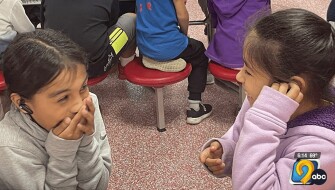When communication between educators, students, and parents is hindered by inadequate proficiency in a language, students lag or fail. Even the most intelligent students will struggle when they are unable to express their thoughts, formulate a question or comprehend a concept because English fluency just isn’t there.
The numbers are staggering and point to a pervasive problem: according to a from the US Department of Education published in May 2022, as of 2019 the number of English language learners in public schools had increased from 9.2% in 2010 (4.5 million students) to 10.4% (5.1 million students).
The Challenges of Limited English Proficiency at School
First-generation immigrants coming to the US to build a new life can face numerous challenges. A common problem English Language Learners (ELLs) and English as a Second Language (ESL) students face in multicultural classrooms is precisely language inequity. Student performance hinges on proficiency in English to understand, internalize, and activate knowledge and skills.
These are some of the issues documented extensively across US school districts:
Making a Difference Instantly with AI-Enabled Language Technology
How can a pair of earbuds increase language access? Language technology company Timekettle provided the answer to this question with its WT2 Edge Translator Earbuds, and has been offering language support to ELLs and ESL students at over 200 schools in the US since 2019.
The WT2 Edge Translator Earbuds are tiny yet powerful devices that can translate up to 40 languages and 93 accents in real time, enabling natural and long-lasting conversations.
As with any consumer technology, the product is only as good as the benefits users can derive from it, and these earbuds have given ELLs an instant benefit: the ability to understand and express themselves in English, all the while learning the language.

Some districts have already seen the transforming power of this technology when placed at the service of disadvantaged students. These are just two examples:
Achieving Equity with Continued Translator Earbuds Use
The ultimate goal of the collaboration between Timekettle and US schools is to flatten the learning curve in the initial integration stage of ELLs at school by providing equal learning opportunities.
The faster the students develop fluency in English, the more confident and comfortable they are, and the better the grades achieved, but while that fluency is attained, essential everyday communication and comprehension is being achieved through in-ear translation technology.
This joint effort by a language technology company and educational institutions plays a significant role in ensuring equal access to students, regardless of proficiency level, literacy, situation or subject matter. That is how technology aids in achieving equity.
Adopting an entirely different technical design to advance products in speech processing, simultaneous interpretation, and AI translation, Timekettle’s first of its kind translator earbuds are embedded with industry leading HybridComm™ technology. Thanks to this technology, people are avoiding the hassles of conventional translation products like handheld translator devices and translation apps, which force users to pass equipment back and forth.
In education, Timekettle products cover all possible scenarios, including 1v1 (one-on-one), 1vN (one-to-many), and NvN (many-to-many). Already secure and boasting the efficiency of an extra-long battery life, Timekettle will also provide an exclusive database engine cluster for educational and governmental users of the translator earbuds.
Additionally, Timekettle will continue optimizing the user experience and innovating with greater tools for seamless and effective teaching and learning activities. Several of these user-friendly, education-focused product innovations are in the company’s pipeline and are estimated to be available in September 2023.
All in all, Timekettle Translator Earbuds are the best solution for overcoming language barriers in education because:
Testimonials from User in Educational Settings
It's our job as educators to be able to provide students with equal access and a design for education where everyone has the same opportunities.
I don't have to stop. And I can teach them when I am teaching everybody else. And they are getting it translated in their own language.
I believe this is a really good solution to an issue that has to be addressed and will help kids be more successful and more excited about being in school, as well as help teachers in being able to do what they want to do: to teach.
Recommended Resource: